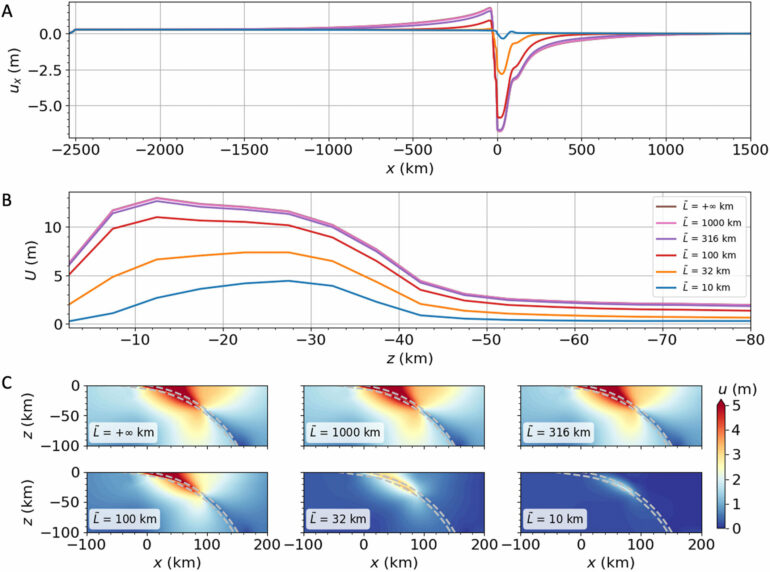Plates at subduction zones typically move just a few centimeters per year. But when accumulated stress at these convergent plate boundaries releases suddenly, the plates can slip several meters and cause some of Earth’s largest earthquakes. The timing and location of such megathrust earthquakes depend on factors such as the shape, roughness, composition, and fluid content of the fault.
Aside from the danger they pose, such earthquakes disrupt the slow, long-term changes occurring at subduction zones. The cycle of sudden earthquakes and slow plate movement makes it difficult for scientists to create a single computer model that accurately combines all of these features. Seismic cycles and long-term deformation are typically modeled separately, and models that do try to simulate both processes don’t capture along-strike variations, which help dictate the size of a megathrust earthquake.
Jiaqi Fang and colleagues describe a new subduction model that can better capture both long-term tectonics and short-term earthquakes and that agrees with existing observations. The model combines several factors, such as buoyancy forces that drive plate motion; diffusion and dislocation creep, which describe material flow in the mantle; and the friction between tectonic plates, to more accurately capture the mechanics of subduction across both time and fault length. The paper is published in Geophysical Research Letters.
The new model, which simulates movements along a 4,040 × 660-square-kilometer thrust fault area, predicts plate movement of around 5 centimeters per year and ruptures with around 10 meters of slip every several hundred years. The model also accounts for how greater rupture length correlates with earthquakes of greater magnitude.
More information:
Jiaqi Fang et al, Dynamic Emergence of Plate Motions and Great Megathrust Earthquakes Across Length and Time Scales, Geophysical Research Letters (2024). DOI: 10.1029/2024GL110821
This story is republished courtesy of Eos, hosted by the American Geophysical Union. Read the original story here.
Citation:
Megathrust earthquakes: Modeling the long and short of subduction zones (2025, January 13)



